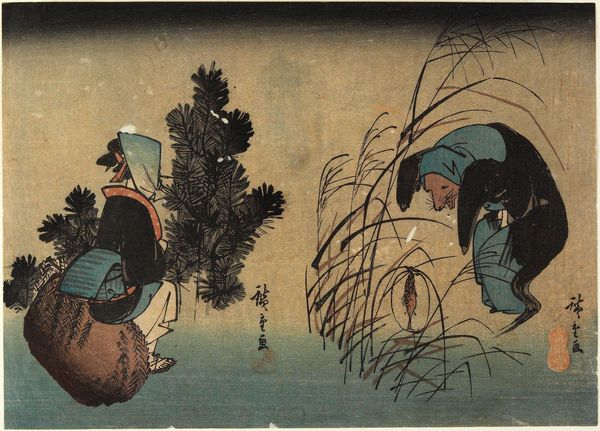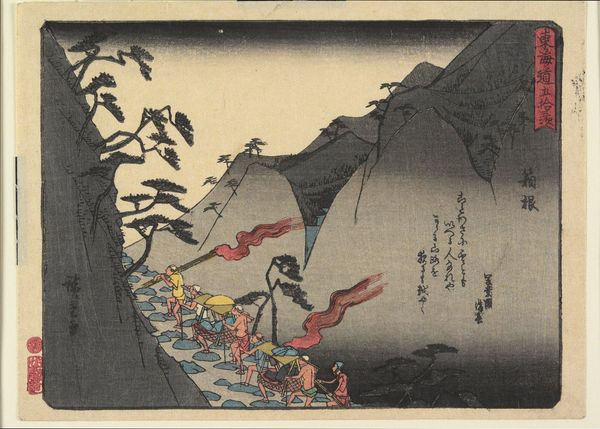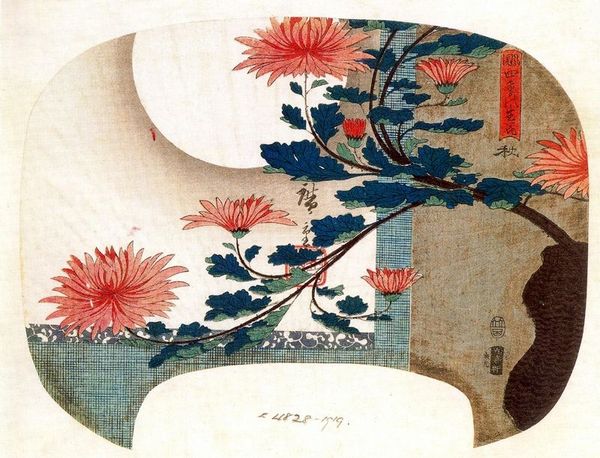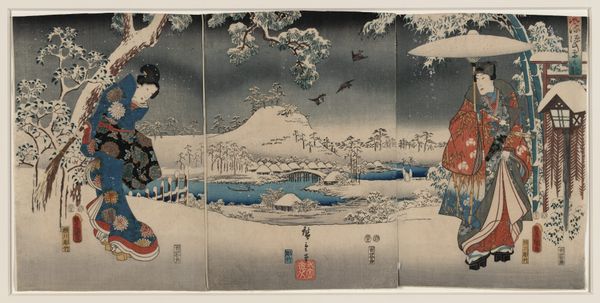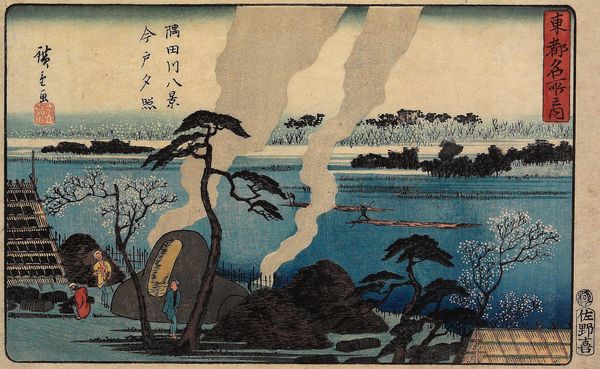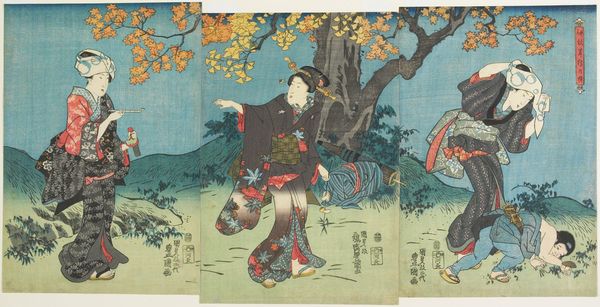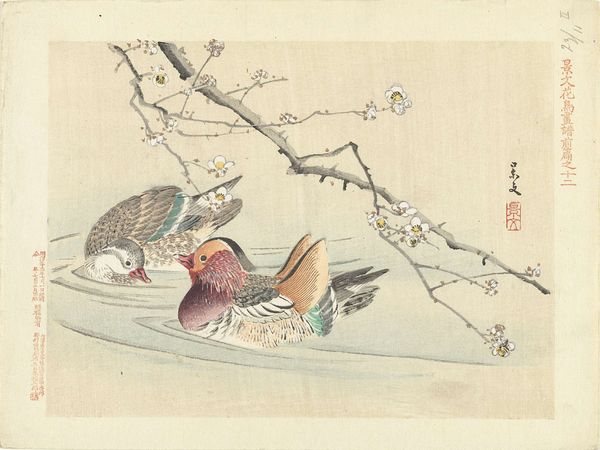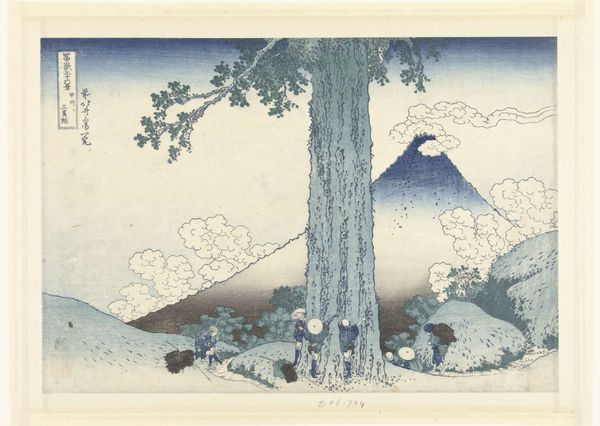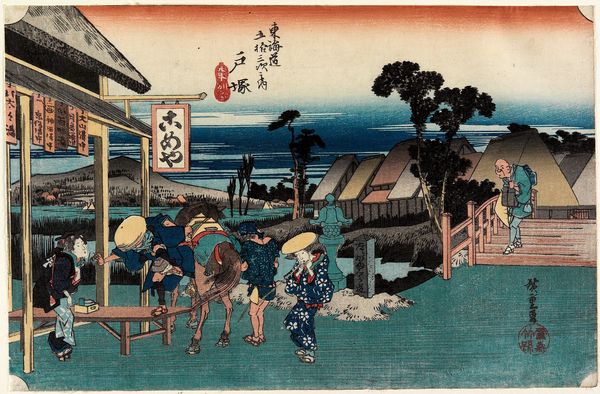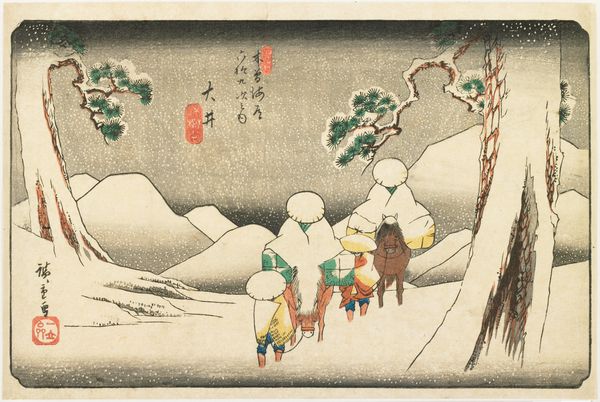
print, paper, ink, color-on-paper
#
water colours
#
narrative-art
# print
#
asian-art
#
landscape
#
ukiyo-e
#
japan
#
paper
#
ink
#
color-on-paper
#
mixed media
#
watercolor
Dimensions: 8 5/8 × 13 1/2 in. (21.9 × 34.3 cm) (image, sheet, horizontal ōban)
Copyright: Public Domain
Editor: This woodblock print is “Night Battle at Mikusa Mountain” by Utagawa Hiroshige, dating from around 1832 to 1834. It’s done with ink and colors on paper and shows a scene filled with battling figures beneath a dark, almost smoky sky. I'm struck by how Hiroshige captures movement despite the static nature of the print. What key symbols or images stand out to you in this work? Curator: Well, the most obvious is the fire blazing at the top of the hill. It's not just illumination; fire represents purification, destruction, but also a kind of fervent energy. Consider the banners too—their symbols would have carried very specific meanings to the contemporary viewer, clan allegiances, perhaps philosophical declarations about valor and sacrifice. The trees themselves, gnarled and resilient, speak of nature's enduring power in the face of conflict. Editor: So the banners aren't just decoration then; they're actually communicating something specific about who is fighting and what they represent? Curator: Precisely. And notice how the artist uses the landscape itself. The dark, looming mountain not only frames the battle, it's almost a silent witness, echoing the weight of history. Ukiyo-e prints weren't simply pretty pictures; they were filled with visual language understood by their audience. Does the artist employ this technique to elevate, warn, and influence the emotions of the print’s audiences? Editor: It’s fascinating to consider how much cultural knowledge is embedded in this image, more than just what initially meets the eye. Now I understand that there’s another story underneath, filled with symbols I’m keen to research. Curator: Indeed. Understanding the symbols unlocks a deeper appreciation not only for the artistry but also the historical moment it reflects. A single image becomes a potent carrier of cultural memory.
Comments
No comments
Be the first to comment and join the conversation on the ultimate creative platform.
